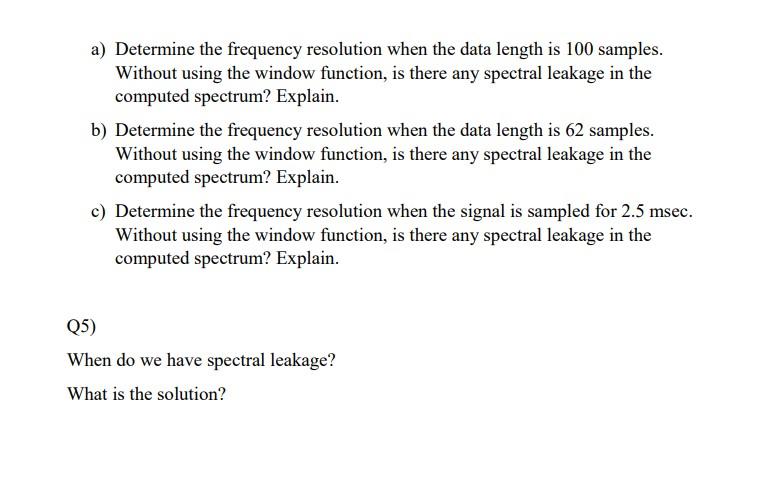Answered step by step
Verified Expert Solution
Question
1 Approved Answer
Given a sequence x(n), where x(0) = 1, x(1) = 2, x(2) = 0, x(3) = 1 with two additional zeros padded at x(4)


Given a sequence x(n), where x(0) = 1, x(1) = 2, x(2) = 0, x(3) = 1 with two additional zeros padded at x(4) and x(5), evaluate the its DFT. If the sampling rate is 100 samples/sec evaluate the frequencies of the signal. Find and draw the spectrum of the amplitude, power, and phase. In the drawing show the frequency bin number and the corresponding frequency. Q2) We use the DFT to compute the amplitude spectrum of a sampled data sequence with a sampling rate of 2000 samples/sec. The frequency resolution has to be less than 0.4 Hz. Determine the number of data points used by the FFT algorithm and the actual frequency resolution in Hz, assuming that the data samples are available for selecting the number of data points. Q3) Consider the following data sequence of length six: x(0) = 0, x(1) = 1, x(2) = 0, x(3) = -1, x(4) = 0, x(5) = 1 Compute the DFT coefficients using Hamming window. Q4) Assume that a sinusoidal signal with a frequency of 2 KHz is sampled at a rate of 8000 samples/sec. We apply DFT to get the signal spectrum. a) Determine the frequency resolution when the data length is 100 samples. Without using the window function, is there any spectral leakage in the computed spectrum? Explain. b) Determine the frequency resolution when the data length is 62 samples. Without using the window function, is there any spectral leakage in the computed spectrum? Explain. c) Determine the frequency resolution when the signal is sampled for 2.5 msec. Without using the window function, is there any spectral leakage in the computed spectrum? Explain. Q5) When do we have spectral leakage? What is the solution?
Step by Step Solution
There are 3 Steps involved in it
Step: 1

Get Instant Access to Expert-Tailored Solutions
See step-by-step solutions with expert insights and AI powered tools for academic success
Step: 2

Step: 3

Ace Your Homework with AI
Get the answers you need in no time with our AI-driven, step-by-step assistance
Get Started


